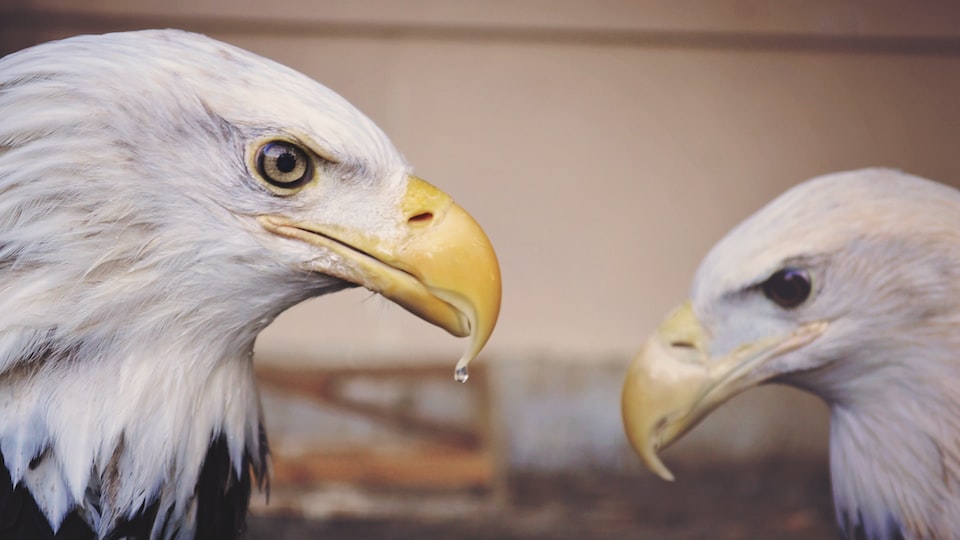Introduction: Can Macaws and Cockatoos be Kept in Groups or with Other Bird Species?
Are you considering adding an Ara or a Kakadu to your household? These magnificent parrots are known for their vibrant colors, intelligence, and playful personalities. However, if you’re thinking about keeping them in groups or with other bird species, it’s important to understand the dynamics and considerations involved.
In this blog post, we will explore whether Aras and Kakadus can be successfully kept in groups or with other bird species. We’ll discuss the advantages and challenges of these arrangements and provide valuable tips for maintaining a harmonious avian community. So, let’s dive into the fascinating world of these beautiful birds!
 \
\
Image: Aras and Kakadus playing together in a group.
1. The Nature of Aras and Kakadus: Social Birds at Heart
Before we discuss whether Aras and Kakadus can coexist in groups or with other bird species, it’s important to understand their natural behavior. Both Aras and Kakadus are highly social birds, forming strong bonds with their flock members. These birds thrive on social interaction, mental stimulation, and companionship.
2. Keeping Aras and Kakadus in Groups: Advantages and Considerations
Keeping Aras and Kakadus in a group can have several advantages. These include:
- Social Enrichment: By providing a group setting, you can simulate their natural behavior and ensure they have opportunities for social interaction and mental stimulation.
- Emotional Support: A group dynamic can offer emotional support and companionship for these highly social birds.
- Behavioral Development: Interacting with other parrots can teach them valuable skills, problem-solving techniques, and proper social etiquette.
However, it’s crucial to consider these factors before deciding to keep Aras and Kakadus in a group:
- Space and Housing: Providing a spacious and enriched environment is essential to accommodate multiple birds. Make sure the enclosure is large enough to allow freedom of movement and includes plenty of perches, toys, and feeding stations.
- Supervision and Interaction: Regular monitoring of their interactions is necessary to ensure harmony within the group. Introduce new members gradually and monitor their behavior to prevent any conflicts or stress.
- Individual Attention: Even when kept in a group, it’s important to provide individual attention and bonding time with each bird to maintain their trust and unique personalities.
3. Mixing Aras and Kakadus with Other Bird Species: The Importance of Compatibility
While it is possible to keep Aras and Kakadus with other bird species, there are several factors to consider:
- Size and Temperament: Ensure that the bird species you are considering to introduce are of similar size and temperament to minimize the risk of aggressive interactions.
- Dietary Requirements: Different bird species may have varying dietary needs. Ensure that the nutritional requirements of all birds are met and that their feeding habits are compatible.
- Territory and Resources: Providing adequate space, perches, and feeding stations is crucial to avoid competition over resources. Each bird should have enough room to establish its territory and feel secure.
- Introduction and Monitoring: Introduce new birds gradually, allowing them to adjust to each other’s presence while closely monitoring their interactions. Separate them if any signs of aggression or stress occur.
Conclusion: Creating a Harmonious Avian Community
In conclusion, Aras and Kakadus can be successfully kept in groups or with other bird species with proper planning and understanding of their needs. Group settings can provide social enrichment and emotional support for these highly social parrots. However, it’s important to consider factors such as space, supervision, and interaction when keeping them together.
Before integrating different bird species, ensure compatibility in terms of size, temperament, and dietary requirements. Gradual introduction and continuous monitoring are essential to prevent conflicts and ensure a harmonious avian community.
 \
\
Image: Kakadus playing harmoniously with other bird species in a bird aviary.
Now that you have a better understanding of whether Aras and Kakadus can be kept in groups or with other bird species, you can embark on your journey towards a harmonious bird community. Remember to provide a stimulating and enriched environment, individual attention, and proper introductions to create a happy and thriving avian community.
Watch this video to see Aras and Kakadus playing together in a group:
So, are you ready to create a harmonious avian community? Share your thoughts and experiences in the comments below!
Keywords: Aras, Kakadus, social parrots, avian community, group housing, compatibility, space, supervision, interaction, gradual introduction, harmonious community.
Leave a Reply